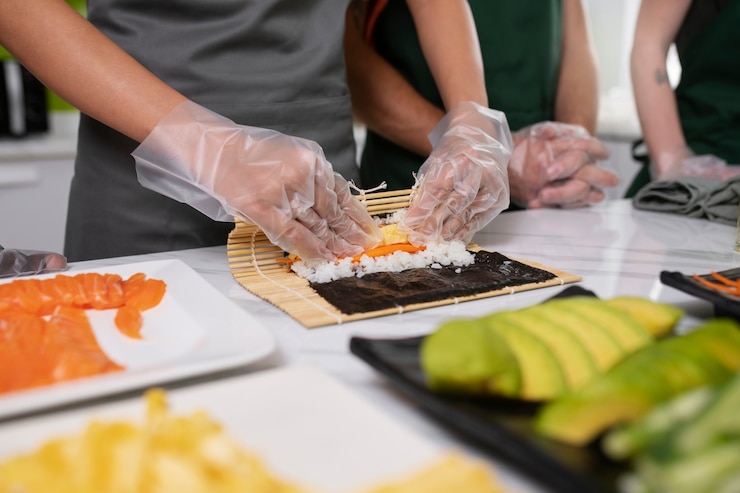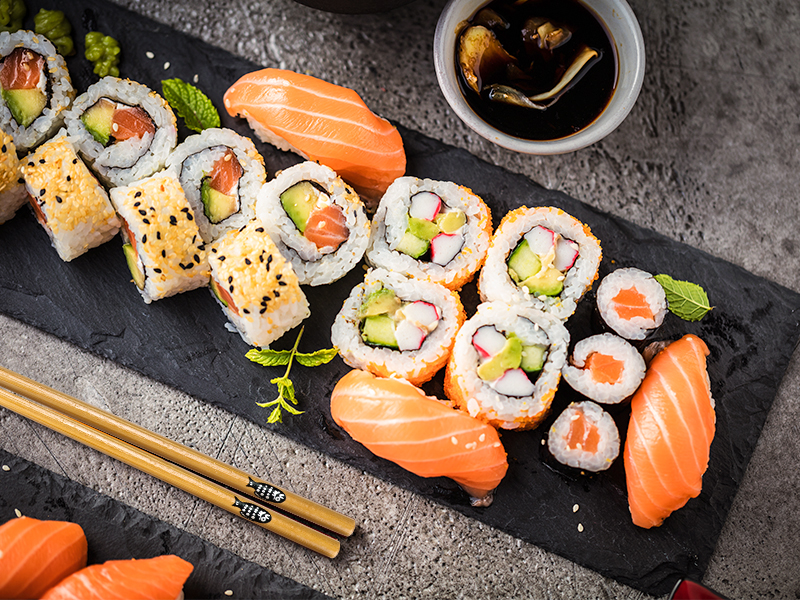For sushi lovers, understanding the traditional Japanese sushi equipment used in crafting these culinary delights is essential. Each piece of equipment plays a vital role in achieving the authenticity and flavor that characterizes authentic Japanese sushi. Before you embark on the sushi-making journey, it’s crucial to know the fundamental tools that contribute to creating a perfectly balanced dish.

What is Sushi?
Sushi is more than just raw fish; it’s an art form that blends rice, seaweed, and seafood to produce a harmonious flavor profile. The preparation requires precision and skill, which is why having the right traditional equipment is indispensable for anyone venturing into this flavorful world.
Essential Traditional Japanese Sushi Equipment
Sushi Mat (Makisu)
The sushi mat is instrumental in rolling sushi neatly and tightly. Made from bamboo strips tied together with cotton string, it’s a tool that requires proper care to maintain its usability. To learn more about maintaining bamboo mats, check out this comprehensive guide.
Rice Paddle (Shamoji)
The shamoji is used for stirring and serving rice. Its flat shape is perfect for scooping and spreading rice evenly.
Hangiri
A hangiri is a round, flat-bottom wooden tub used in the final steps of preparing sushi rice. It helps in absorbing excess moisture and seasoning the rice. If you want to ensure your rice is cooled properly, refer to our detailed article on using hangiri.
Sushi Knife (Yanagi)
The yanagi is a long, thin knife specifically designed for slicing fish with minimal damage to the delicate flesh.
Wasabi Grater
This tool is essential for grating fresh wasabi into a fine paste, adding a spicy kick to sushi.
Preparing Sushi Rice
The Importance of Proper Rice Preparation
Sushi rice is the foundation of any good sushi. Achieving the right texture and flavor requires careful preparation using a rice cooker followed by mixing in a hangiri.
Cooling Sushi Rice
Ensuring that sushi rice cools to the right temperature without hardening is crucial. For tips on cooling rice effectively, take a look at our post on cooling sushi rice.
The Various Styles of Sushi
Nigiri
Nigiri involves pressing pieces of fish atop small mounds of rice.
Maki
These are rolls encased in seaweed, rice, and filled with vegetables or seafood.
Temaki
Hand-rolled into a cone shape, containing rice, fish, and vegetables.
Sashimi
Sliced raw fish served without rice, relying on perfect knife skills.
Modern Adaptations in Sushi Making
Many sushi enthusiasts are experimenting with new techniques and ingredients while still relying on classic equipment as a foundation. Curious if you can make sushi using other utensils? Explore how to make sushi with plastic wrap.

FAQ
Can beginners make sushi at home?
Yes, with the right tools and guidance, anyone can start making sushi at home.
Where can I buy traditional sushi equipment?
These tools can often be found at specialty culinary stores or online retailers.
What is the best rice to use for sushi?
Short-grain Japanese rice is typically recommended for sushi because of its texture and stickiness.
Get more insights on sushi etiquette from this guide.
This article contains affiliate links. We may earn a commission at no extra cost to you.


